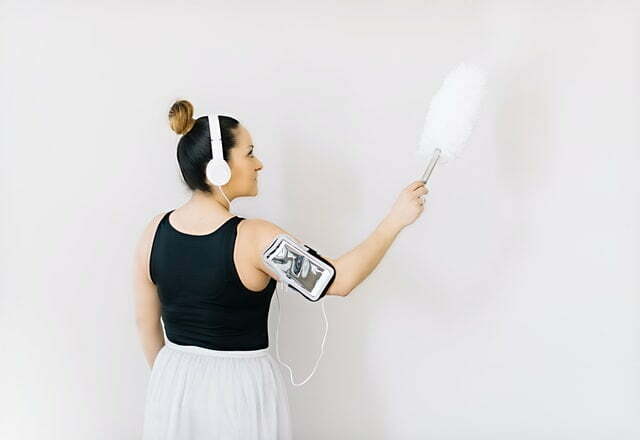6 Carpet Cleaning Mistakes You Should Stay Away From
As useful as they are, carpets are a part of almost every household. With different sizes, shapes, and colors, they decorate our rooms and protect the floors. The technique and materials for making carpets have changed throughout the years, and they are very much adjusted to peoples’ everyday needs. Since carpets are placed on the floor, cleaning them is required at least once a month. Due to the materials used to make them, there are specific steps in this process that one must follow to do it right. Here are six carpet cleaning mistakes you should stay away from!
1. Using the Wrong Chemicals
As suggested by carpet cleaning experts in Lexington, KY, using the wrong chemicals is probably the “mistake number one” when cleaning carpets. Due to the combination of wool and synthetic fiber, cleaning carpets with regular cleaning products won’t give you any results. Instead, you may have even bigger stains, weird smells, and irreparable damage. Even if none of these shows up, the chances that dirt located deep in the fiber is gone are slim. Try to avoid using clothes detergents, strong chemicals, and homemade cleaning products. Instead, you can take your carpet to a cleaning service or get cleaning products specifically made for cleaning carpets.
Speaking of choosing good cleaning supplies for your carpets, keep in mind that you will need to prepare them for transportation in case of relocation. Chemicals are not the easiest items to pack for this event, so to protect them during transport, you need some tips. Place them in sealable bags, so they won’t damage anything around them even if they spill. Place them in suitable boxes, and fill in empty space so the containers can’t move much.
2. Forcefully Scrubbing the Carpet
Once you get the right cleaning products for your carpet, another danger is coming your way. Forcefully scrubbing your carpet while cleaning it does much more damage than you can imagine. Although carpets seem to be made of pretty rough material, fibers are not as resistant as they may appear. Using rough brushes or other tools will damage the fibers, and after some time, the damage will become visible. Unfortunately, this is impossible to fix, so you should try to clean it as gently as possible.

3. Waiting Too Long To Deep Clean It
We usually don’t pay too much attention to carpets until something draws our attention. They can be placed under huge tables and heavy sofas, and we may not see how dirty they have become. But during all this time, dust particles fall and get deep into the fabric. Usually, vacuuming carpets will remove most of them. But, unfortunately, vacuuming isn’t enough. After some time, dirt will become visible. If you skip regular carpet deep cleaning, some stains may become permanent. The best way to avoid this is to inform yourself about carpet cleaning companies in Kentucky that will provide excellent service and take care of your carpets.
4. Not Letting Your Carpet Dry Properly
Due to lack of time, we may easily underestimate the drying process, especially if our carpets are big and rough. This may lead to a much bigger problem than it would with other materials. Once you roll up the rug, before it properly dries, mold can form. As annoying as mold is, it is also very unhealthy and permanent. Mold is also very bad for our health and since carpets can be in any room- make sure to prevent this from happening. Experts from Miami Movers for Less advise that the approximate time for carpet drying is 6-12 hours! This interval may even be longer if the room has high humidity or is cold. Once you wash your carpet, make sure to find a suitable place for it to dry. By doing this, you are avoiding making multiple carpet cleaning mistakes.

5. Forgetting To Wash The Back Of Your Carpet
Although this may sound like a pretty hard step to miss, you probably didn’t think that the back of the carpets needs good scrubbing as well. The back of a rug is usually pretty rough and covered with synthetic fibers, which doesn’t mean you don’t have to spend some time cleaning it. Once you start cleaning your carpet, make sure to lift it, clean the surface below it, and then switch sides. Now, the face-up side of the carpet will face the floor, and you can start cleaning its back.
Carpet soap, warm water, and brush will do it when it comes to tools and cleaning products. Always keep a dry rag close to you to absorb excess water. After you finish, clean the floor one more time just in case. Luckily, there are plenty of tips online on how to clean your carpet like a pro, so make sure to give them a try.
6. Don’t Clean Multiple Carpets at Once
If your household is big, you probably have multiple carpets across your home. Once you start cleaning them, make sure not to clean them all at once. There are many different reasons why this will not turn out well. Cleaning carpets is not an easy job, and by the time you reach the third one, you may feel pretty exhausted. Many satisfied customers of carpet cleaning services in Kentucky claim that this situation is the main reason they switched to professionals. Considering that it will take some time to clean both sides, then let them dry, think good before you start this entire process.

Bottom Line
And just like that, you can be a professional when it comes to cleaning carpets! You will avoid all the carpet cleaning mistakes we usually make by giving yourself enough time and getting your hands on some good cleaning products. Keep in mind that the weather in Kentucky is fantastic during summer or late spring, so you can even let them dry in the sun. On the other hand, if this is not your cup of tea, a carpet cleaning company will take care of it. After all, you deserve to have fresh and clean carpets in your home. Your entire house will smell wonderful and will look neat and fresh.
Bluegrass Company
https://www.google.com/maps?cid=1536571363059009812
3323 Wood Valley Ct, Lexington, KY 40502
(859) 888-1515
http://155.138.213.92/
6 Carpet Cleaning Mistakes You Should Stay Away From, Carpet Cleaning Lexington KY, carpet cleaning mistakes, Cleaning Tips & Tricks, common carpet cleaning mistakes










